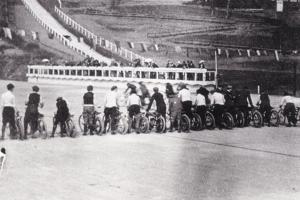



The extraordinary life of W.O. Bentley
"To build a fast car, a good car, the best in its class.”
(W.O. Bentley, Founder)
Born in 1888 as the youngest of nine siblings, Walter Owen Bentley – though he preferred to be called W.O. – founded the company that carries his name on 10 July 1919. Now, almost 100 years later, his name is known across the globe for creating cars with an unrivalled blend of performance and the finest craftsmanship and materials. Below, we take a look at the man who changed motoring forever.
Bentley Motors was founded by W.O. Bentley. The first car to bear his name pulled out of New Street Mews, London in 1919.
From modest beginnings, the company moved from strength to strength – in a relentless pursuit of both luxury and performance. Were it not for the brand’s five victories at Le Mans in the 1920s, plus a sixth in 2003, this combination could be seen as a contradiction in terms. In which case, it could be said that Bentley continues to create the most acclaimed contradictions on the road today.
Almost a century later, W.O.'s vision continues to guide our beliefs, actions and ambitions. Located in Crewe, England and owned by Volkswagen AG since 1998, Bentley Motors remains the definitive British luxury car company, crafting the world’s most desirable high performance grand tourers.











